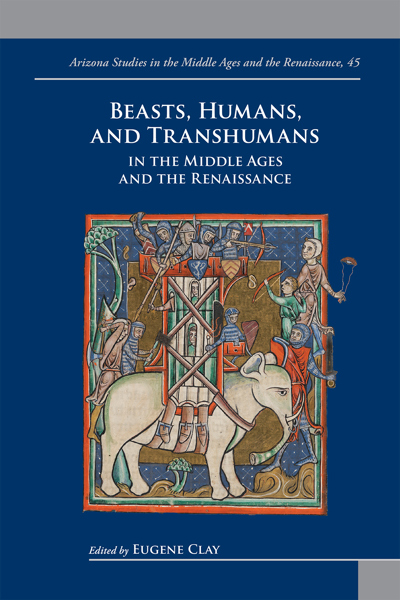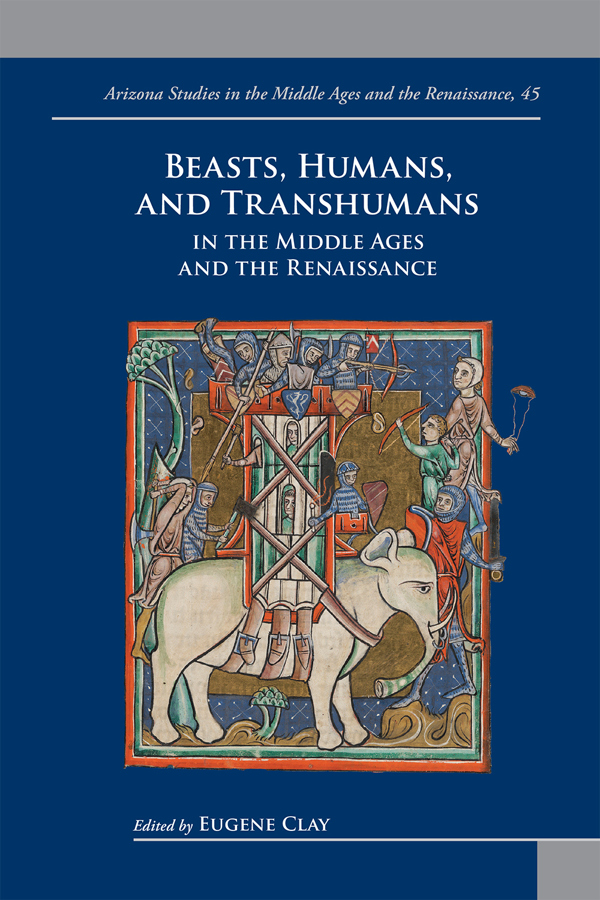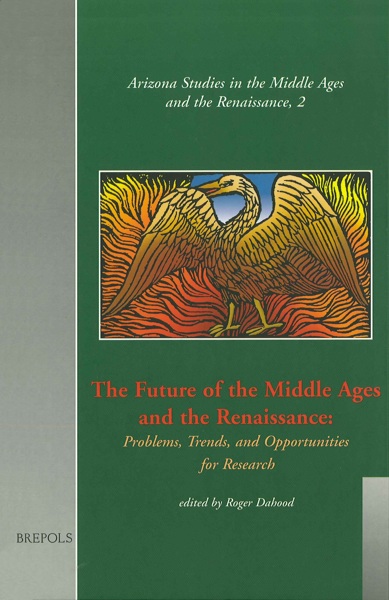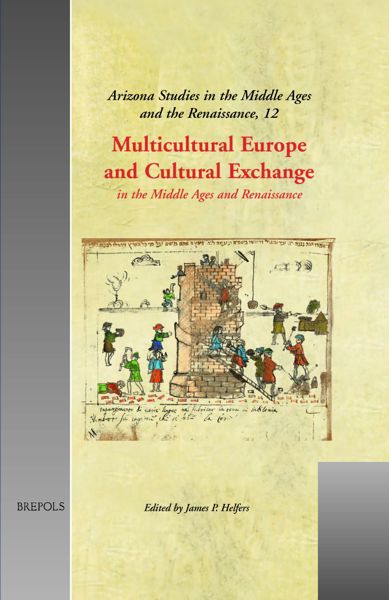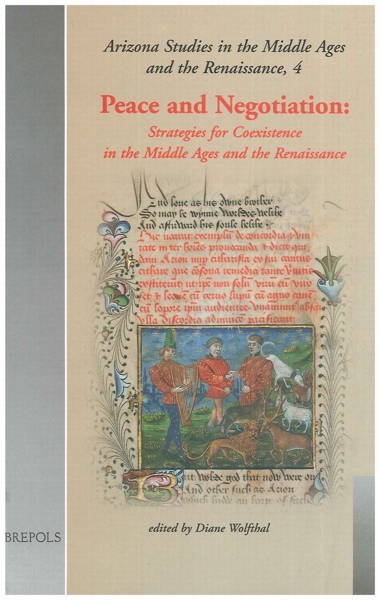
Beasts, Humans, and Transhumans in the Middle Ages and the Renaissance
Eugene Clay (ed)
- Pages: xxiv + 168 p.
- Size:156 x 234 mm
- Illustrations:3 b/w, 4 col.
- Language(s):English
- Publication Year:2020
- € 75,00 EXCL. VAT RETAIL PRICE
- ISBN: 978-2-503-59063-9
- Hardback
- Available
- € 75,00 EXCL. VAT RETAIL PRICE
- ISBN: 978-2-503-59064-6
- E-book
- Available
From shape-shifting Merlin to the homunculi of Paracelsus, the nine fascinating essays of this collection explore the contested boundaries between human and non-human animals, between the body and the spirit, and between the demonic and the divine.
"(...) this eclectic collection of essays would be a meaningful library addition on topics of metamorphosis, human/animal relations, and monstrosity." (John Garton, in Renaissance Quarterly, 78/2, 2025, p. 640)
J. Eugene Clay is an associate professor of religious studies at Arizona State University, where he writes and lectures about religious movements in Eurasia and the encounters of the world religions. His work has appeared in Church History, Russian History/Histoire russe, and the Cahiers du monde russe. He has received grants and awards from the Social Science Research Council, the National Endowment for the Humanities, and the International Research and Exchanges Board.
From shape-shifting Merlin to the homunculi of Paracelsus, the nine fascinating essays of this collection explore the contested boundaries between human and non-human animals, between the body and the spirit, and between the demonic and the divine. Drawing on recent work in animal studies, posthumanism, and transhumanism, these innovative articles show how contemporary debates about the nature and future of humanity have deep roots in the myths, literature, philosophy, and art of the Middle Ages and the Renaissance. The authors of these essays demonstrate how classical stories of monsters and metamorphoses offered philosophers, artists, and poets a rich source for reflection on marriage, resurrection, and the passions of love. The ambiguous and shifting distinctions between human, animal, demon, and angel have long been contentious. Beasts can elevate humanity: for Renaissance courtiers, horsemanship defined nobility. But animals are also associated with the demonic, and medieval illuminators portrayed Satan with bestial features. Divided into three sections that examine metamorphoses, human-animal relations, and the demonic and monstrous, this volume raises intriguing questions about the ways humans have understood their kinship with animals, nature, and the supernatural.
Introduction — J. EUGENE CLAY
Part I Metamorphoses
Animal/Merlin/Demon — ROBERT S. STURGES
Metamorphosis and Metempsychosis in Thomas Bradwardine’s De causa Dei — EDIT ANNA LUKACS
The Birds of Love: Doves, Pigeons and Owls in Nicolas Brizard’s Metamorphoses Amoris (1556) — JOHN NASSICHUK
Part II Beasts and Humans
Beastly Boars and Human Hunters in MS Bodley 764 — SUSAN ANDERSON
Horsemanship and Libros de Jineta in Habsburg Spain — KATHRYN RENTON
Part III Beyond Humanity: Demons and Monsters
"If You Go Down to the Woods Today": William Rufus and the Noonday Demon — DAVID SCOTT-MACNAB
Behold thy Beast of Hoof and Horn: Representations of the Devil in Illuminations of the Temptation of Christ, 1150–1400 —AMANDA E. DOWNEY
A Monstrous Marriage: Grotesque Ornament in Late Renaissance ‘Cassoni’ — RACHEL L. CHANTOS
The Monsters of Paracelsus — THOMAS WILLARD
Notes on Contributors
